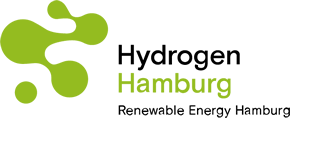Details
Storing hydrogen – in metal hydrides Research at Hereon: storing hydrogen efficiently and safely
When you see it in front of you, it doesn’t look like much: metal hydride powder. Yet this mouse-grey, boring-looking powder is incredibly exciting from a scientific and technological point of view. The metal atoms in the powder can bind hydrogen – and completely release it again. The material soaks up the hydrogen like a sponge. Researchers at the Helmholtz-Zentrum Hereon have been investigating this form of hydrogen storage for over 20 years.

When you see it in front of you, it doesn’t look like much: metal hydride powder. Yet this mouse-grey, boring-looking powder is incredibly exciting from a scientific and technological point of view. The metal atoms in the powder can bind hydrogen – and completely release it again. The material soaks up the hydrogen like a sponge. Researchers at the Helmholtz-Zentrum Hereon have been investigating this form of hydrogen storage for over 20 years.
The powder-filled tanks, which can be smaller or larger depending on use, are an alternative to the conventional compressed gas storage tanks (which work with pressures of up to 700 bar) and liquid hydrogen (which is energy intensive in terms of needing to be cooled down). The tanks are designed and built in regards to the respective demand. Fuel cells, which are supplied by tanks like these, produce the necessary waste heat to extract the hydrogen from the hydride – and thus the technology achieves a high degree of efficiency.
The advantages of metal hydride storage tanks:
- high energy density (a higher density than the one between metal atoms is almost impossible; such a compact application is particularly important in mobile applications)
- high energy efficiency (up to 93 percent)
- high level of safety (the metal hydrides absorb the hydrogen at moderate pressures and temperatures and release it again in a controlled rather than sudden way)
Uses of metal hydride storage tanks:
The storage technology developed in Geesthacht can be used in many sectors:
- in road transport: e.g. for hydrogen storage in fuel cell vehicles
- in aviation: e.g. hydrogen production and refuelling infrastructure
- in shipping: e.g. in the construction of the hydrogen system on board the new research vessel LUDWIG PRANDTL II
- in sector coupling: between electricity, heating, mobility
- in seasonal energy storage systems: e.g. coupled with wind power or photovoltaics and electrolysis
Current projects
The Hereon research centre is involved in many projects in which the technology is now being developed to the point that it can be put into use. Two current examples:
In the HyCARE project, Hereon scientists are working alongside other research teams in Europe to develop a modular tank system which can accommodate at least 40 kilograms of hydrogen in a very small space and store heat at the same time. The first prototype module was built in 2020 and tested in Geesthacht. Thanks to the strong results achieved by this prototype, the storage system is being optimised by SME partners – this includes all safety aspects, cost-effective production and a control strategy. Another life cycle analysis is running in parallel to demonstrate the system’s ecological potential. The HyCARE system is set to be installed at partner ENGIE in Paris by the summer of 2022.
Together with Volkswagen AG and two other companies, Panco GmbH and Stühff Maschinen- und Anlagenbau GmbH, researchers at Hereon are developing a mobile hydrogen storage tank based on metal hydrides in the H2HybridTank project This will store around 5 kilograms of hydrogen at a charging pressure of maximum 60 bar in a complex shaped pressure tank. As a stationary demonstrator for the developed technology, this should be able to fully supply a car fuel cell.
Research at Hereon
The Helmholtz-Zentrum Hereon conducts international cutting-edge research for a changing world: around 1,100 employees work across a total of 15 institutes on high-performance materials, procedures and environmentally-friendly mobility technologies and new energy systems, amongst other things. The Institute of Hydrogen Technology primarily concentrates on storage possibilities. This includes essential material development, upscaling material synthesis and integration into different systems. The whole process is accompanied by computer simulations. The Institute of Photoelectrochemistry is researching the climate-neutral production of H2 by means of photoelectrochemical cells, or so-called “artificial leaves”. The Institute of Membrane Research develops energy-efficient procedures in the field of hydrogen technology to separate and purify hydrogen from mixed gas streams, such as natural gas, for example.
More fascinating articles on this subject:
- Interview with Hamburg’s Minister of Economic Affairs, Michael Westhagemann and hydrogen researcher, Thomas Klassen
- Hydrogen on the march!



